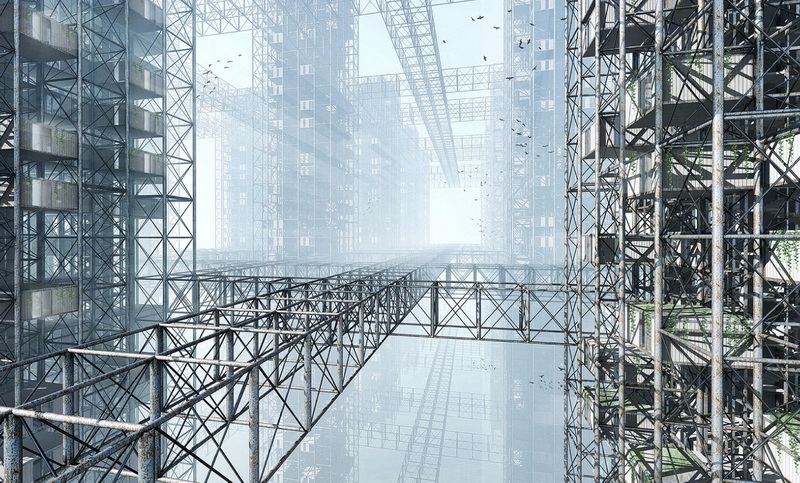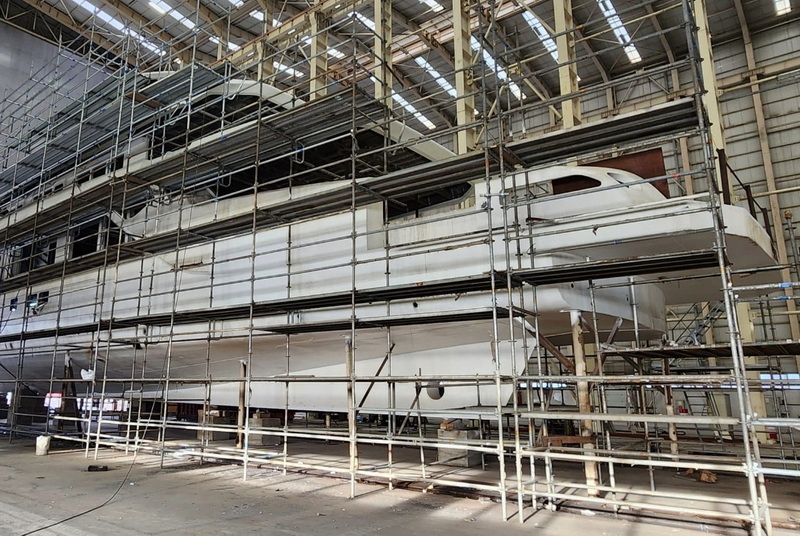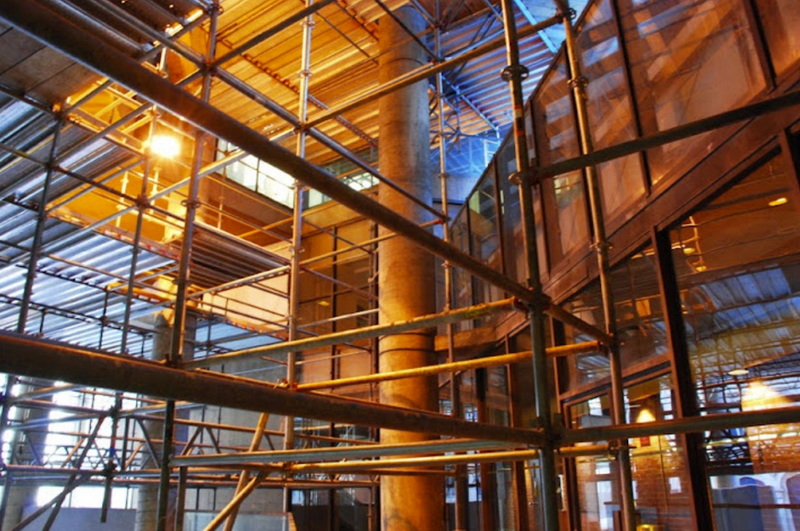Content Menu
● Introduction to Contour System Scaffolding
● Key Features of Contour System Scaffolding
● Applications of Contour System Scaffolding
>> 1. Complex Architectural Projects
>> 2. Historical Buildings
>> 3. Industrial Settings
● Benefits of Using Contour System Scaffolding
>> 1. Efficiency and Productivity
>> 2. Safety Features
>> 3. Cost-Effectiveness
● Comparison with Other Scaffolding Systems
● Case Studies: Successful Use of Contour System Scaffolding
>> 1. The Gherkin, London
>> 2. Historical Preservation Projects
● Safety Considerations for Contour System Scaffolding
● Additional Accessories for Contour System Scaffolding
>> 1. Scaffolding Nets
>> 2. Fall Protection Systems
● Conclusion
● FAQ
>> 1. What are the primary benefits of using contour system scaffolding?
>> 2. How does contour system scaffolding differ from traditional scaffolding?
>> 3. What safety features does contour system scaffolding provide?
>> 4. Can contour system scaffolding be used for historical preservation projects?
>> 5. How does contour system scaffolding contribute to cost savings?
● Citations:
Contour system scaffolding is renowned for its versatility and adaptability, making it an ideal choice for complex architectural designs. This type of scaffolding is designed to conform to irregular shapes and curves, providing a stable working platform for construction, renovation, and maintenance tasks. This article will explore the capabilities and applications of contour system scaffolding, highlighting its benefits in handling intricate architectural projects.

Introduction to Contour System Scaffolding
Contour system scaffolding is a specialized form of scaffolding that mirrors the shape of a building, allowing for comprehensive access to complex structures. It is particularly useful in projects involving curved or irregularly shaped buildings, such as domes, arches, or uniquely designed skyscrapers.
Key Features of Contour System Scaffolding
1. Adaptability: Can be customized to fit various architectural shapes, including curved and irregular structures.
2. Modular Design: Comprises modular components that facilitate quick assembly and disassembly.
3. Safety Features: Provides a secure working environment with guardrails and stable platforms, ensuring worker safety.
Applications of Contour System Scaffolding
1. Complex Architectural Projects
Contour system scaffolding is ideal for projects with unique architectural designs, such as the Gherkin in London. Its ability to mirror the building's shape ensures that workers can safely access all areas for maintenance, renovation, or construction tasks.
2. Historical Buildings
In the preservation of historical buildings, contour scaffolding allows for delicate restoration work without compromising the structure's integrity. It provides a stable platform for artisans to perform detailed tasks while maintaining the building's original features.
3. Industrial Settings
In industrial environments, contour scaffolding is used for maintenance and repair tasks on complex machinery or structures. Its adaptability ensures safe access to all areas, enhancing efficiency and reducing downtime.
Benefits of Using Contour System Scaffolding
1. Efficiency and Productivity
- Quick Assembly: Modular components facilitate fast setup and teardown, reducing project timelines.
- Comprehensive Access: Provides complete access to complex structures, enhancing worker productivity.
2. Safety Features
- Stable Platforms: Offers secure working surfaces with guardrails, minimizing the risk of accidents.
- Adaptability: Conforms to unique building shapes, ensuring safe access to all areas.
3. Cost-Effectiveness
- Reduced Labor Costs: Efficient assembly and disassembly reduce labor expenses.
- Long-Term Savings: Durable materials ensure long-term usability, minimizing replacement costs.

Comparison with Other Scaffolding Systems
| Feature | Contour System Scaffolding | Traditional Scaffolding |
| Adaptability | Highly adaptable to complex shapes | Limited adaptability |
| Assembly Speed | Fast, modular design | Slower, more labor-intensive |
| Safety Features | Stable platforms with guardrails | Basic safety features |
| Cost-Effectiveness | Reduces labor costs, durable materials | Higher costs due to manual labor |
Case Studies: Successful Use of Contour System Scaffolding
1. The Gherkin, London
The Gherkin's curved glass façade posed significant challenges for scaffolding. A contour system scaffolding solution was used to mirror the building's shape, ensuring comprehensive access for maintenance tasks.
2. Historical Preservation Projects
In historical preservation projects, contour scaffolding has been used to provide a stable platform for delicate restoration work. This ensures that the building's original features are maintained while allowing artisans to perform detailed tasks safely.
Safety Considerations for Contour System Scaffolding
Safety is paramount when using contour system scaffolding. Key considerations include:
- Regular Inspections: Conduct regular checks for damage or wear.
- Proper Assembly: Ensure all components are securely connected.
- Fall Protection: Implement fall protection measures such as guardrails and safety nets.
Additional Accessories for Contour System Scaffolding
1. Scaffolding Nets
Scaffolding nets are used for weather protection and to prevent objects from falling off the scaffolding. They are air-permeable and highly tear-resistant, making them ideal for various scaffolding configurations.
2. Fall Protection Systems
Fall protection systems are designed to ensure worker safety by providing innovative solutions for preventing falls. These systems include harnesses, lanyards, and safety nets.
Conclusion
Contour system scaffolding is a versatile and efficient solution for complex architectural designs. Its ability to adapt to unique building shapes, combined with its modular design and safety features, makes it an ideal choice for construction, renovation, and maintenance projects. By leveraging contour scaffolding, contractors can enhance project productivity while ensuring a secure working environment.

FAQ
1. What are the primary benefits of using contour system scaffolding?
The primary benefits include adaptability to complex shapes, quick assembly, and enhanced safety features. Contour scaffolding provides comprehensive access to unique structures, reducing project timelines and labor costs.
2. How does contour system scaffolding differ from traditional scaffolding?
Contour scaffolding is distinguished by its ability to conform to irregular shapes and curves, making it ideal for complex architectural projects. Traditional scaffolding systems lack this adaptability, often requiring more time and labor for setup.
3. What safety features does contour system scaffolding provide?
Contour scaffolding offers stable platforms with guardrails, ensuring a secure working environment. Regular inspections and proper assembly are also crucial for maintaining safety.
4. Can contour system scaffolding be used for historical preservation projects?
Yes, contour scaffolding is suitable for historical preservation projects. It provides a stable platform for delicate restoration work without compromising the structure's integrity.
5. How does contour system scaffolding contribute to cost savings?
Contour scaffolding contributes to cost savings by reducing labor costs through efficient assembly and disassembly. Its durable materials also ensure long-term usability, minimizing replacement costs.
Citations:
[1] https://bdcscaffolding.co.uk/examples-of-iconic-scaffolding-in-london-architecture/
[2] https://cisrs.org.uk/wp-content/uploads/2018/01/plettac-contur-manual-guide.pdf
[3] https://www.cad-journal.net/files/vol_4/CAD_4(1-4)_2007_395-403.pdf
[4] https://www.osha.gov/sites/default/files/publications/OSHA_FS-3759.pdf
[5] https://scaffoldtype.com/tube-and-coupler-scaffolding/
[6] https://www.altradgeneration.com/en-gb/solutions/systems
[7] https://www.tp-scaffold.com/can-contour-system-scaffolding-be-used-for-complex-architectural-designs.html
[8] https://biljax.com/product-category/scaffold/system-scaffold






















